Fanxu Meng
Hierarchically Encapsulated Representation for Protocol Design in Self-Driving Labs
Apr 04, 2025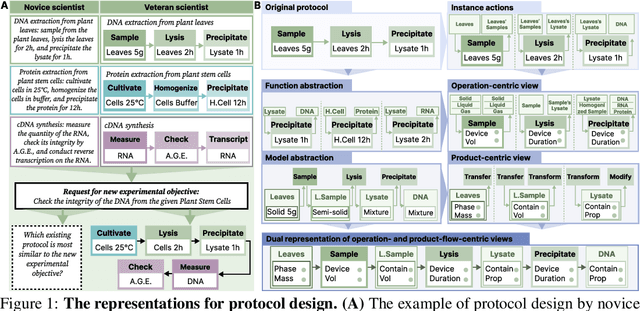

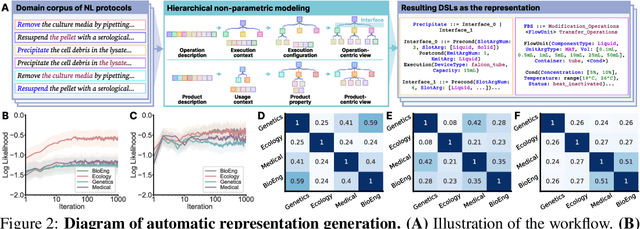
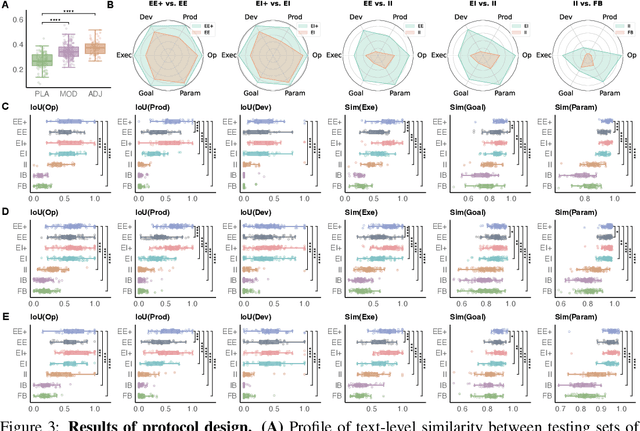
Abstract:Self-driving laboratories have begun to replace human experimenters in performing single experimental skills or predetermined experimental protocols. However, as the pace of idea iteration in scientific research has been intensified by Artificial Intelligence, the demand for rapid design of new protocols for new discoveries become evident. Efforts to automate protocol design have been initiated, but the capabilities of knowledge-based machine designers, such as Large Language Models, have not been fully elicited, probably for the absence of a systematic representation of experimental knowledge, as opposed to isolated, flatten pieces of information. To tackle this issue, we propose a multi-faceted, multi-scale representation, where instance actions, generalized operations, and product flow models are hierarchically encapsulated using Domain-Specific Languages. We further develop a data-driven algorithm based on non-parametric modeling that autonomously customizes these representations for specific domains. The proposed representation is equipped with various machine designers to manage protocol design tasks, including planning, modification, and adjustment. The results demonstrate that the proposed method could effectively complement Large Language Models in the protocol design process, serving as an auxiliary module in the realm of machine-assisted scientific exploration.
LIFT: Improving Long Context Understanding of Large Language Models through Long Input Fine-Tuning
Feb 20, 2025Abstract:Long context understanding remains challenging for large language models due to their limited context windows. This paper presents Long Input Fine-Tuning (LIFT), a novel framework for long-context modeling that can improve the long-context performance of arbitrary (short-context) LLMs by dynamically adapting model parameters based on the long input. Importantly, LIFT, rather than endlessly extending the context window size to accommodate increasingly longer inputs in context, chooses to store and absorb the long input in parameter. By fine-tuning the long input into model parameters, LIFT allows short-context LLMs to answer questions even when the required information is not provided in the context during inference. Furthermore, to enhance LIFT performance while maintaining the original in-context learning (ICL) capabilities, we introduce Gated Memory, a specialized attention adapter that automatically balances long input memorization and ICL. We provide a comprehensive analysis of the strengths and limitations of LIFT on long context understanding, offering valuable directions for future research.
TransMLA: Multi-head Latent Attention Is All You Need
Feb 11, 2025Abstract:Modern large language models (LLMs) often encounter communication bottlenecks on current hardware, rather than purely computational constraints. Multi-head Latent Attention (MLA) tackles this challenge by using low-rank matrices in the key-value (KV) layers, thereby allowing compressed latent KV states to be cached. This approach significantly reduces the KV cache size relative to traditional multi-head attention, leading to faster inference. Moreover, MLA employs an up-projection matrix to increase expressiveness, trading additional computation for reduced communication overhead. Although MLA has demonstrated efficiency and effectiveness in Deepseek V2/V3/R1, many major model providers still rely on Group Query Attention (GQA) and have not announced any plans to adopt MLA. In this paper, we show that GQA can always be represented by MLA while maintaining the same KV cache overhead, but the converse does not hold. To encourage broader use of MLA, we introduce **TransMLA**, a post-training method that converts widely used GQA-based pre-trained models (e.g., LLaMA, Qwen, Mixtral) into MLA-based models. After conversion, the model can undergo additional training to boost expressiveness without increasing the KV cache size. Furthermore, we plan to develop MLA-specific inference acceleration techniques to preserve low latency in transformed models, thus enabling more efficient distillation of Deepseek R1.
LIFT: Improving Long Context Understanding Through Long Input Fine-Tuning
Dec 18, 2024Abstract:Long context understanding remains challenging for large language models due to their limited context windows. This paper introduces Long Input Fine-Tuning (LIFT) for long context modeling, a novel framework that enhances LLM performance on long-context tasks by adapting model parameters to the context at test time. LIFT enables efficient processing of lengthy inputs without the computational burden of offline long-context adaptation, and can improve the long-context capabilities of arbitrary short-context models. The framework is further enhanced by integrating in-context learning and pre-LIFT supervised fine-tuning. The combination of in-context learning and LIFT enables short-context models like Llama 3 to handle arbitrarily long contexts and consistently improves their performance on popular long-context benchmarks like LooGLE and LongBench. We also provide a comprehensive analysis of the strengths and limitations of LIFT on long context understanding, offering valuable directions for future research.
CLOVER: Constrained Learning with Orthonormal Vectors for Eliminating Redundancy
Nov 26, 2024Abstract:To adapt a well-trained large model to downstream tasks, we propose constraining learning within its original latent space by leveraging linear combinations of its basis vectors. This approach ensures stable training without compromising the model's capabilities. Traditionally, constructing orthonormal bases from a matrix requires a transfer matrix, which significantly increases storage and computational overhead for parameters and feature maps. In this paper, we introduce Absorb and Decompose for Q, K, V, and O matrices, enabling their orthogonalization without the need for transfer matrices. Furthermore, the Absorb-Decompose operation eliminates redundant vectors, reducing the encoder attention parameters of Whisper-large-v3 by 46.42% without requiring additional training. For parameter-efficient and stable fine-tuning, we orthonormalized Q, K, V, and O and fine-tuned only the singular values, allowing efficient adaptation while constraining changes to the original latent space. When fine-tuning LLaMA-2-7B on eight commonsense reasoning datasets, our method outperforms LoRA by 5.4% and DoRA by 4.4%.
Expert-level protocol translation for self-driving labs
Nov 01, 2024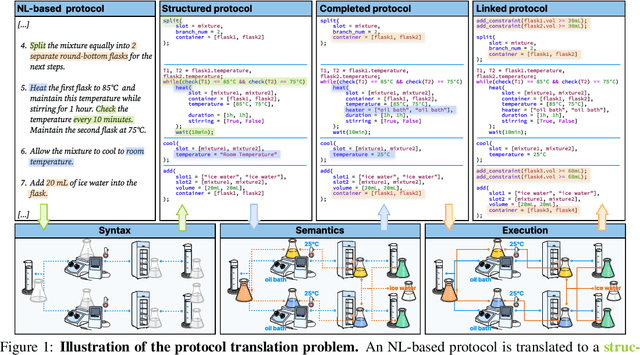
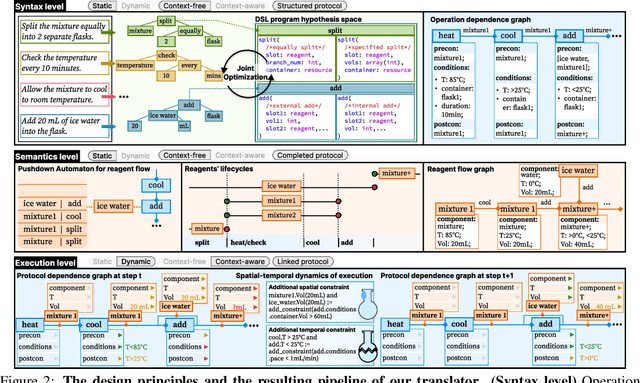
Abstract:Recent development in Artificial Intelligence (AI) models has propelled their application in scientific discovery, but the validation and exploration of these discoveries require subsequent empirical experimentation. The concept of self-driving laboratories promises to automate and thus boost the experimental process following AI-driven discoveries. However, the transition of experimental protocols, originally crafted for human comprehension, into formats interpretable by machines presents significant challenges, which, within the context of specific expert domain, encompass the necessity for structured as opposed to natural language, the imperative for explicit rather than tacit knowledge, and the preservation of causality and consistency throughout protocol steps. Presently, the task of protocol translation predominantly requires the manual and labor-intensive involvement of domain experts and information technology specialists, rendering the process time-intensive. To address these issues, we propose a framework that automates the protocol translation process through a three-stage workflow, which incrementally constructs Protocol Dependence Graphs (PDGs) that approach structured on the syntax level, completed on the semantics level, and linked on the execution level. Quantitative and qualitative evaluations have demonstrated its performance at par with that of human experts, underscoring its potential to significantly expedite and democratize the process of scientific discovery by elevating the automation capabilities within self-driving laboratories.
Abstract Hardware Grounding towards the Automated Design of Automation Systems
Oct 08, 2024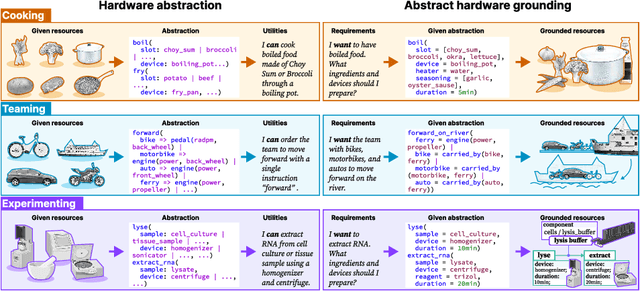
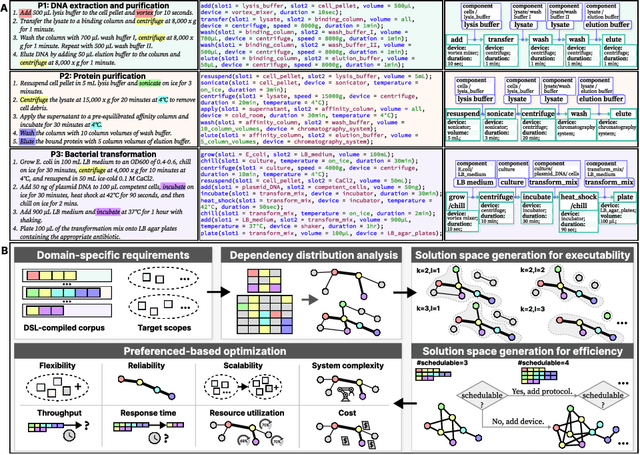
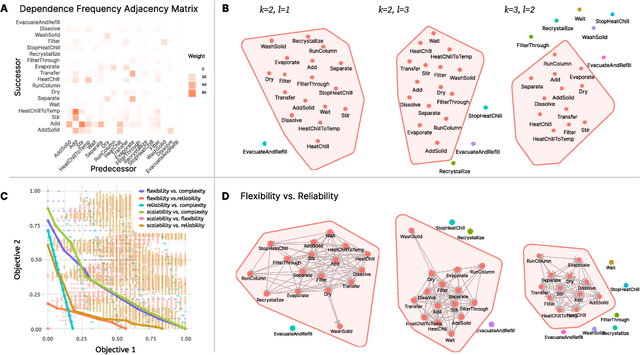
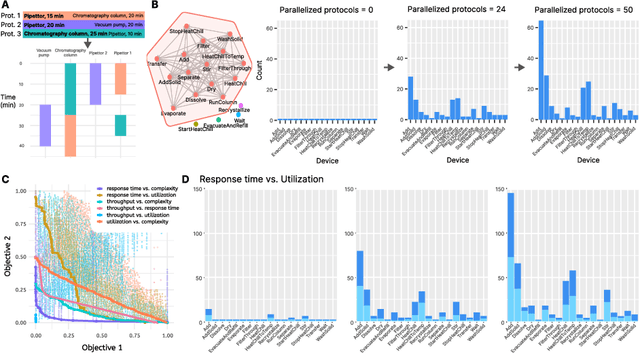
Abstract:Crafting automation systems tailored for specific domains requires aligning the space of human experts' semantics with the space of robot executable actions, and scheduling the required resources and system layout accordingly. Regrettably, there are three major gaps, fine-grained domain-specific knowledge injection, heterogeneity between human knowledge and robot instructions, and diversity of users' preferences, resulting automation system design a case-by-case and labour-intensive effort, thus hindering the democratization of automation. We refer to this challenging alignment as the abstract hardware grounding problem, where we firstly regard the procedural operations in humans' semantics space as the abstraction of hardware requirements, then we ground such abstractions to instantiated hardware devices, subject to constraints and preferences in the real world -- optimizing this problem is essentially standardizing and automating the design of automation systems. On this basis, we develop an automated design framework in a hybrid data-driven and principle-derived fashion. Results on designing self-driving laboratories for enhancing experiment-driven scientific discovery suggest our framework's potential to produce compact systems that fully satisfy domain-specific and user-customized requirements with no redundancy.
AutoDSL: Automated domain-specific language design for structural representation of procedures with constraints
Jun 18, 2024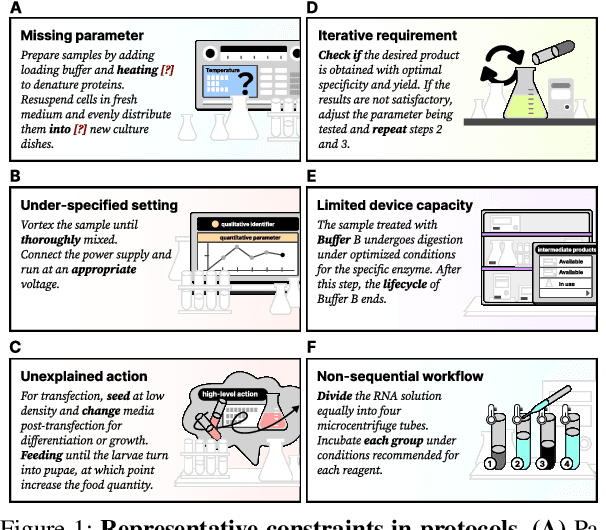
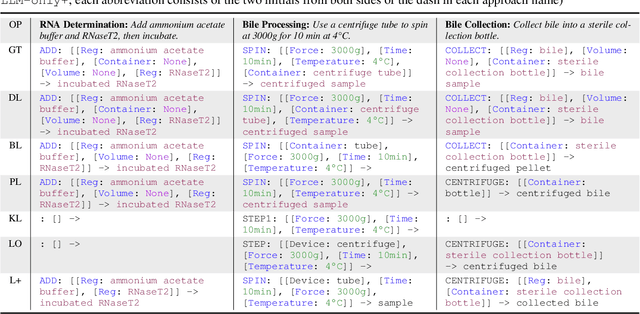


Abstract:Accurate representation of procedures in restricted scenarios, such as non-standardized scientific experiments, requires precise depiction of constraints. Unfortunately, Domain-specific Language (DSL), as an effective tool to express constraints structurally, often requires case-by-case hand-crafting, necessitating customized, labor-intensive efforts. To overcome this challenge, we introduce the AutoDSL framework to automate DSL-based constraint design across various domains. Utilizing domain specified experimental protocol corpora, AutoDSL optimizes syntactic constraints and abstracts semantic constraints. Quantitative and qualitative analyses of the DSLs designed by AutoDSL across five distinct domains highlight its potential as an auxiliary module for language models, aiming to improve procedural planning and execution.
PiSSA: Principal Singular Values and Singular Vectors Adaptation of Large Language Models
Apr 14, 2024Abstract:As the parameters of LLMs expand, the computational cost of fine-tuning the entire model becomes prohibitive. To address this challenge, we introduce a PEFT method, Principal Singular values and Singular vectors Adaptation (PiSSA), which optimizes a significantly reduced parameter space while achieving or surpassing the performance of full-parameter fine-tuning. PiSSA is inspired by Intrinsic SAID, which suggests that pre-trained, over-parametrized models inhabit a space of low intrinsic dimension. Consequently, PiSSA represents a matrix W within the model by the product of two trainable matrices A and B, plus a residual matrix $W^{res}$ for error correction. SVD is employed to factorize W, and the principal singular values and vectors of W are utilized to initialize A and B. The residual singular values and vectors initialize the residual matrix $W^{res}$, which keeps frozen during fine-tuning. Notably, PiSSA shares the same architecture with LoRA. However, LoRA approximates Delta W through the product of two matrices, A, initialized with Gaussian noise, and B, initialized with zeros, while PiSSA initializes A and B with principal singular values and vectors of the original matrix W. PiSSA can better approximate the outcomes of full-parameter fine-tuning at the beginning by changing the essential parts while freezing the "noisy" parts. In comparison, LoRA freezes the original matrix and updates the "noise". This distinction enables PiSSA to convergence much faster than LoRA and also achieve better performance in the end. Due to the same architecture, PiSSA inherits many of LoRA's advantages, such as parameter efficiency and compatibility with quantization. Leveraging a fast SVD method, the initialization of PiSSA takes only a few seconds, inducing negligible cost of switching LoRA to PiSSA.
Chain of Images for Intuitively Reasoning
Nov 09, 2023Abstract:The human brain is naturally equipped to comprehend and interpret visual information rapidly. When confronted with complex problems or concepts, we use flowcharts, sketches, and diagrams to aid our thought process. Leveraging this inherent ability can significantly enhance logical reasoning. However, current Large Language Models (LLMs) do not utilize such visual intuition to help their thinking. Even the most advanced version language models (e.g., GPT-4V and LLaVA) merely align images into textual space, which means their reasoning processes remain purely verbal. To mitigate such limitations, we present a Chain of Images (CoI) approach, which can convert complex language reasoning problems to simple pattern recognition by generating a series of images as intermediate representations. Furthermore, we have developed a CoI evaluation dataset encompassing 15 distinct domains where images can intuitively aid problem-solving. Based on this dataset, we aim to construct a benchmark to assess the capability of future multimodal large-scale models to leverage images for reasoning. In supporting our CoI reasoning, we introduce a symbolic multimodal large language model (SyMLLM) that generates images strictly based on language instructions and accepts both text and image as input. Experiments on Geometry, Chess and Common Sense tasks sourced from the CoI evaluation dataset show that CoI improves performance significantly over the pure-language Chain of Thoughts (CoT) baselines. The code is available at https://github.com/GraphPKU/CoI.
 Add to Chrome
Add to Chrome Add to Firefox
Add to Firefox Add to Edge
Add to Edge